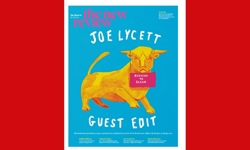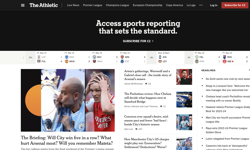The web has changed many things, even the basic business of buying magazines. Magazine subscription websites, which enable consumers to order subscriptions online, are now flourishing, with a third of new subscriptions coming from online sources.
The sector is very mixed. Many of the larger publishers run their own sites – Emap has greatmagazines.co.uk, NatMags has qualitymagazines.co.uk, IPC has giftmags.co.uk and Future Publishing has myfavouritemagazines.co.uk. Some sites are run by retailers, such as WH Smith and the Mills Group, with its uniquemagazines.co.uk.
There’s also an increasing number of independent sites. Andrew Burge started isubscribe in Australia six years ago, and has now successfully brought the concept to the UK. Magazines365.com is a relatively new Irish entrant, and there’s also letssubscribe.com, while magazine-group.co.uk, though owned by Dennis Publishing, operates as an independent.
Then some of the subscription bureaux, such as Tower Publishing Services (with subscription.co.uk), have taken a logical next step into operating subscription websites.
Subscription sites offer the consumer a chance to pick from a large number of titles. Letssubscribe has 400, subscription.co.uk over 300, and isubscribe.co.uk 1,200 - with plans to have over 2,000 by Christmas. Publishers’ own sites are obviously smaller but can still offer a wide selection, depending on the publisher. Future’s myfavouritemagazines.co.uk has over a hundred titles. And the PPA’s Nicola Rowe points out that "a publisher’s site can cross-sell and up-sell, and make the most of subscribers" in a way that some of the third party sites can't.
The business model
The basic business model is simple. The publisher agrees to pay a commission on each subscription sold – there are no up-front fees – and provides basic information together with a cover shot. The site then passes on orders to the publisher, or its bureau, for distribution.
Commission rates are generally around 25 percent. Some sites handle the payments and pass on the relevant percentage to the publisher, while others expect the publisher to handle payments and pay the relevant commission to the site.
Nicola Rowe believes that subscription sites will become increasingly important. She points out that the UK has very low subscriber rates – only 13 percent of magazines, against the 87% sold on the newsstand. That’s the reverse of the US, where 88% of magazines are sold through subscription.
"Historically, one of the issues around subscriptions in the UK has been accessibility," she says. "So websites can help with that issue. And, as an industry we do have to set ourselves a bit of a challenge to increase subscriptions – life is getting tougher on the newsstand."
Therefore, though the subscription sites are useful in adding incremental new subscribers, they don't yet account for a huge percentage of total sales. Soundings suggest that about 30% of new subscription acquisitions are coming through the web – though that includes magazines’ own websites as well as subscription sites. That’s only 4% of total circulation, once you include newsstand sales.
Beatriz Montoya, head of subscriptions at IPC, says "The website, from a subscriptions point of view, is becoming increasingly important, but it’s still a lesser percentage of subscriber acquisition, and subscribers are still only a small percentage of total sales."
Which sites to go on
Publishers who don't include their products on a subscription site are certainly missing out on a potentially highly profitable source of sales. However, the costs of in-house development are prohibitive for the smaller publisher. Andrew Burge says that isubscribe has now spent well in excess of A$1/2m on functionality – "and the costs of development are ongoing."
The independent sites, therefore, look a more attractive means of promoting titles. Beatriz Montoya points out that, even though IPC has its own subscription site, and separate magazine sites, it also puts its titles on third party subscription sites. "We can choose whether to promote our magazines through the portfolio site or the magazine site. Where we cross-promote a number of titles, we send people to the portfolio site. And we use pretty much all the other subscription sites."
Andrew Burge says there’s nothing to stop publishers initially signing up with all the sites – if some don't work out they can cut them later. "The only downside would be if the business they’re looking at has flaws in its customer service or financing model. Otherwise, go with it – be on all the sites."
The major pitfall is that where there’s poor customer service, consumers will associate it with the title rather than with the subscription site. Publishers need to be sure that the site’s systems work well. Another slight problem, in the case of subscription incentives, is that the publisher has to pay for both the incentive and the website’s commission – which can make the deal unviable. That’s clearly not a problem for publishers’ own sites – Future’s myfavouritemagazines.co.uk prominently features offers such as a free gilet with every Digital Camera subscription.
There are quite a number of sites, and many are not well differentiated. Many sites are still purely functional, with no reviews, no samples, and no content. So, it is a numbers game, at the moment – the site that gets the most visitors gets the most sales. It’s not surprising that Andrew Burge says isubscribe has one clear strategy - "We want to be the gorilla, we have to have the greatest range of titles."
But performance varies widely. "In terms of the revenue they generate for us, the sites are very different," says IPC’s Beatriz Montoya. Other sources suggested isubscribe.co.uk and themagazine-group.co.uk are the biggest sellers, while letssubscribe.co.uk has been marketing itself aggressively. Some of the other sites have made less impact on the market.
Back end systems
But publishers will find the real differentiation between sites comes when they look at the back end systems. That’s something the consumer will never see, but it can make a big difference to publishers who may need to integrate the information with their own systems or with those of their subscription bureau.
Some subscription sites provide only Excel spreadsheets, while others can integrate with the publisher’s ERP systems. Some will provide business intelligence, too - Tower provides Webtrends statistics and a customisable report generator, on its subscription.co.uk site.
Marketing expertise and technology may prove the ultimate differentiator. Beatriz Montoya says "Some of these guys are becoming a lot more active – they’re offering a lot more marketing opportunities for the publisher." IPC’s own site, giftmags, she says, is already using collaborative filtering to increase its multiple sales, and there is a lot more that can be done.
Some of the independent sites charge for additional marketing of the titles they carry; for instance uniquemagazines.co.uk offers email marketing for an additional cost per thousand. Others see it as part of the subscription site’s key value add. Isubscribe doesn't charge for its marketing activities, other than, of course, getting its regular commission on any extra sales.
What’s clear is that the sector will have to move from simply making the product available on a website, to actively marketing the product. Marketing the site has become increasingly important – and expensive. Search engine optimisation and paid for search are the main marketing methods. Beatriz Montoya says "A huge proportion of the sector is tied up with Google. It’s unbelievable the power it has – search engines really do drive the traffic."
The cost is considerable. According to Andrew Burge, isubscribe is now spending just under £1/2m a year on marketing the site, and he says "You do have to be prepared to reinvest any money you make back into the brand." He has also started to use direct mail.
What’s next?
Most subscription sites have focused on consumer titles up till now – but many sites are now starting to offer business and trade titles. And digital editions are very much on the horizon, both as samples and as paid for product. Isubscribe is trialing digital editions on the site – this is particularly useful for titles that customers are unlikely to see on the newsstand. Magazines365.com and giftmags are working with Zinio to provide digital editions, too. However, actually selling digital editions may be a slow burn.
Subscription sites are also waking up to the fact that they need to include content and become stickier, leaving their catalogue days behind. RSS feeds of live content can be added, for instance, creating a magazine microsite within the subscription website. Again, that would give customers the ability to get better acquainted with the title before making their purchasing decision.
With maturity, it’s likely that sites will turn their attention from marketing new subscriptions to renewals. Andrew Burge says "We don't actively pursue them at the moment, but as the business grows, there’s more we can do to assist with renewals." Some sites, such as uniquemagazines, are now also handling the advertising side of the business – passing on orders and taking a commission, or allowing downloads of the media pack for the title.
But, possibly, the biggest change is the entry of a major e-commerce player – amazon.com. NatMags has already placed gift subscriptions on the site, and more will surely follow. This certainly turns the heat up in the market – though I suspect titles could be easily lost among all the other products offered on the site.
Amazon’s entry may well spur some consolidation of the market. Andrew Burge notes that "there are a lot of smaller sites, and the economies of this business are very volume driven." Those sites that aren't getting enough volume will eventually not be able to compete. It’s a vicious circle - sites that are not selling enough will not be able to spend on marketing, and the less they spend, the less they’ll sell...
As the cost of both development and marketing rises, it looks certain that sites will have to consolidate. We’re now entering a period of more intense competition – and the sites with the biggest pockets are the most likely winners.
FEATURE
Subscription websites
Shelf space is not a problem online, and neither, as a result, are range reviews or delistings. There is room for all and virtual magazine superstores are springing up all over the place, offering consumers a wide choice and publishers a valuable new source of subscribers. Andrea Kirkby looks at the sector.










